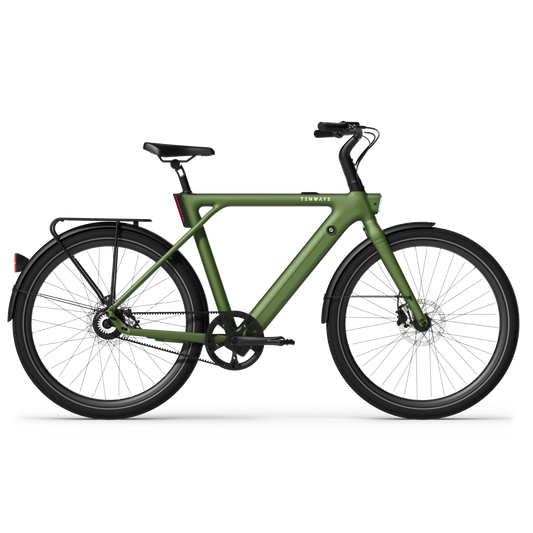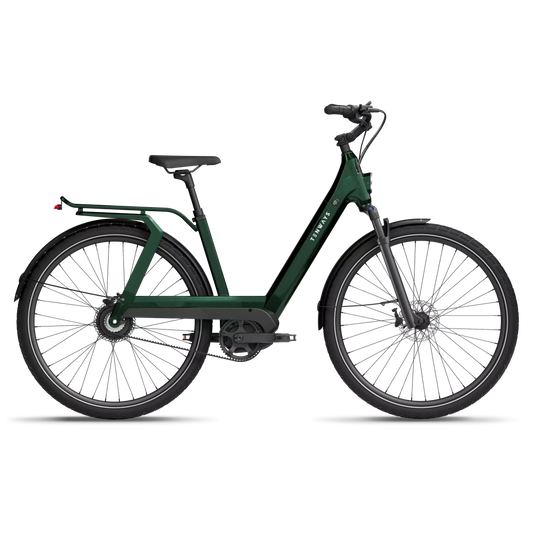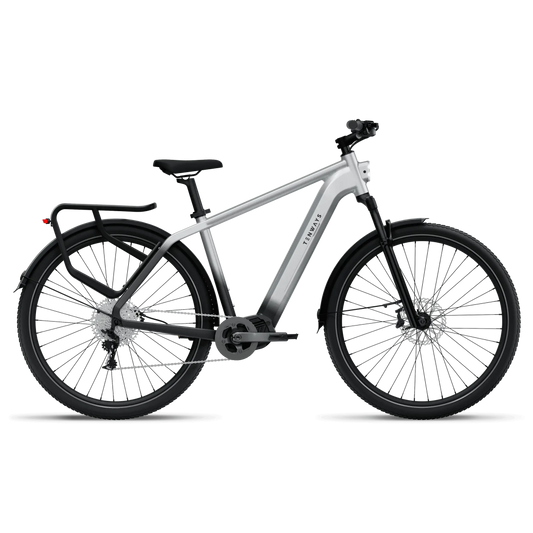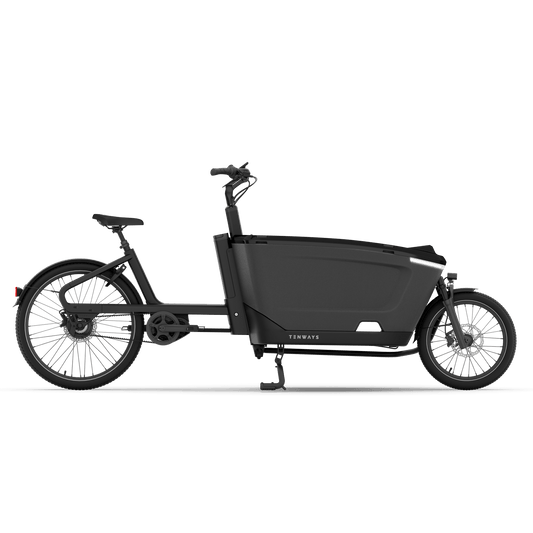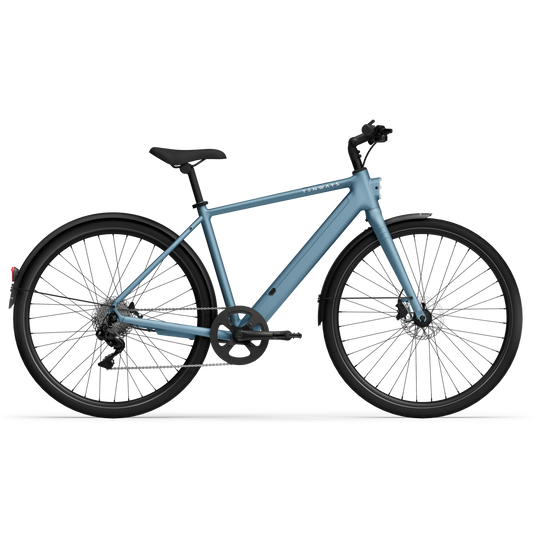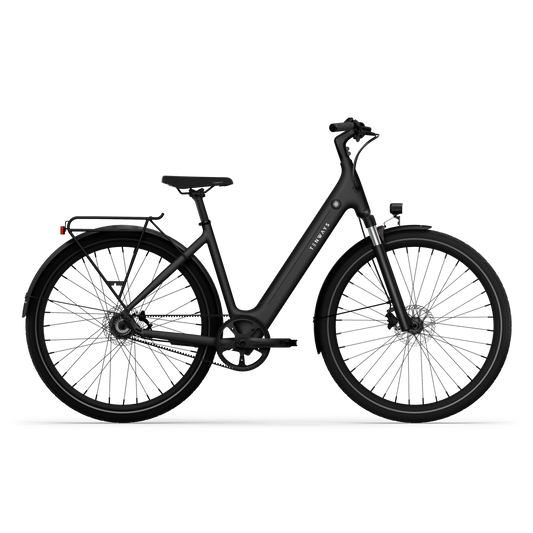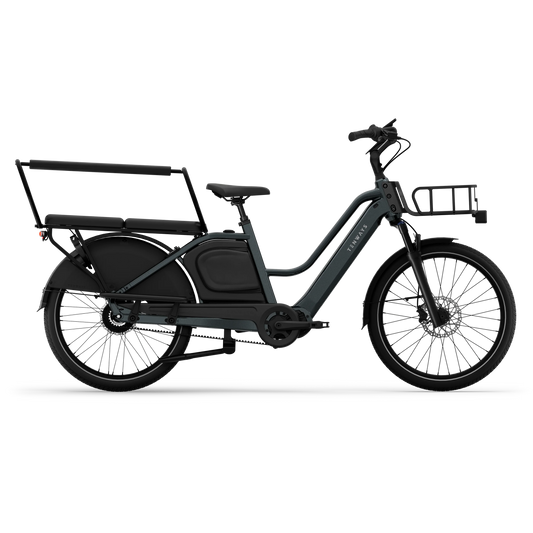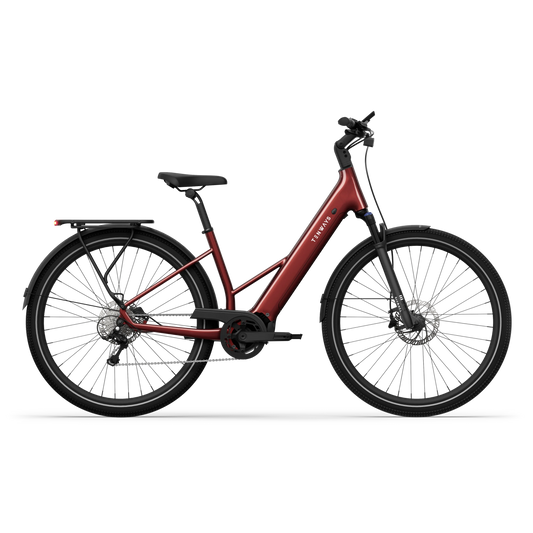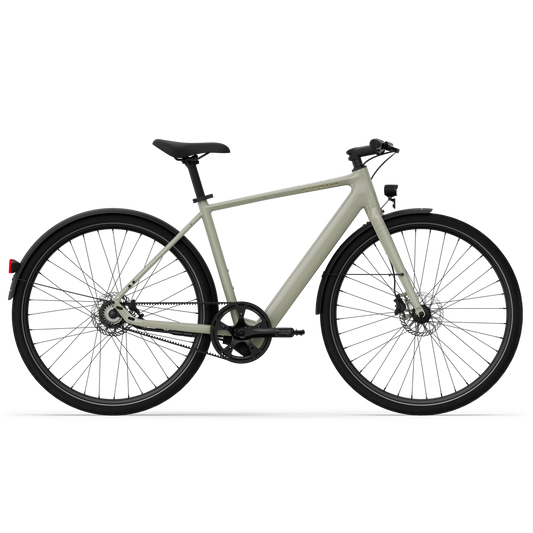As city cycling by e-bike continues to gain popularity as an economical and ecological way to move from A to B, bike theft remains a real concern for riders everywhere. If you are not lucky enough to have a lockup or indoor parking at the other end of your ride, you will want to feel like you have done everything possible to keep your bike locked safe and sound for your return. E-bikes are generally higher value, with more expensive components than regular bikes, which can make them more of a target. So what are the best locks and locking methods these days?
What types of bike locks are there?
Frame Lock
A frame lock is so-called because it is securely fitted to the frame itself. It works by passing a bolt through the wheel to prevent that wheel from turning, making it unrideable. The locks are generally strong but light and compact, and can be left in place on the frame while riding, without getting in your way or weighing you down, which can be the case with some other locks. They come at different security rating levels, depending on how hard it might be for a thief to break them. Insurance companies will often specify which class of lock you need to have on your bike in order to make a claim, so look out for this information in your policy and when making a purchase.
Pros: very convenient to fit and forget so long as you have the key with you, considered extremely secure when used in combination with another lock, often compatible with insurance requirements
Cons: cannot prevent the bike from being lifted into a vehicle to steal
Tips: ensure to purchase a reputable brand, use in combination with another lock, check the fitting and frame configuration of your bike are suitable for the lock
Want a frame lock? Here's a free one. In this back-to-school season, buy any of these models - CGO600, CGO800S or AGO T from August 25, we'll throw in an AXA frame lock for free! And that's not all; if you buy a CGO600 in lime green or XL size, you can add a TENWAYS power bank for the price of €199 (usual price €299). Make sure you don't miss out on these great offers while stocks last!

D Lock
A D Lock (also sometimes called a U Lock) is a heavy, solid metal shackle, with a U-shaped solid bar that slots into a straight metal bar. These are considered one of the more secure kinds of locks, but can be heavy and awkward. A D Lock should be attached to a secure locking point through the frame, not the forks or wheels, and fitted close and tight, to avoid allowing leverage points for forcing the lock. For best results, it is recommended to combine a high-quality D Lock with a cable lock (described above), to further deter and slow down bike nabbers.
Pros: considered one of the most secure locks, a visual deterrent to thieves, often compatible with insurance requirements
Cons: heavier and awkward to carry or fit, can be expensive, cheaper D locks can more easily be forced or cut
Tips: look for the highest security rating, fit close the locking point and combine with cable lock

Folding Lock
Many makers over the years have launched what they claim to be a truly secure folding lock. These are usually made up of large, flat chain links, that can fold down into a chunky but more compact package. In use, they are somewhere in between a D lock and cable lock, being a little more flexible in how you can position them and a little more secure than a cable alone.
Pros: lighter and easier to store than a D lock but stronger than a cable lock
Cons: chain links are a weak point for forcing, joints may become rusted or seize up
Tips: as with any lock, look for a reputable manufacturer and rating, use in combination with another lock
Chain Lock
Cargo bike owners often cite a motorcycle chain lock as their deterrent of choice in the fight against bike thieves. As cargo bikes are more heavy-duty than regular commuter or town bikes, this can make sense, as the lock is easier to carry on board a cargo bike when in use, before securing when parking up.
Pros: hard to force or cut
Cons: heavy and hard to transport, store and attach, expensive, could alert thieves to a high-value bike
Tips: buy high quality, high rated, and make sure your securing point is as strong as the chain

Alarm
The wild card of the picks here, an alarm works by triggering loud and unpleasant noises designed to by scare criminals away and attract attention to the attempted theft. They might be triggered by unauthorised movement, or by the failure to enter a correct keycode.
Pros: as a less common deterrent, it could catch thieves off guard and effectively scare them off
Cons: people in cities are used to alarms and the thief may not care about the noise and attention, they need to be charged to ensure they work when needed
Tips: park in a busy area for best impact, use in combination with another lock
Stealthier e-biking
As mentioned earlier, bike thieves are often attracted to e-bikes because of their generally higher value. If your e-bike looks like a regular bike at a glance, this provides an extra layer of protection against opportunist theft! Our CGO600 fits that bill perfectly. With its slimline battery neatly integrated into the frame, compact rear hub motor, and minimalist display, it doesn't shout “e-bike” to the casual observer, helping it to fly under the radar of potential thieves.

Choosing the right lock for you
So there are quite a few choices out there, and none of them seem perfect, right? How can you know which is the best setup to keep your beloved bike safe on the streets?
Every person's routine and environment are different; we recommend thinking about your regular rides, and preparing for the circumstances you're likely to encounter. What kind of securing points are available where you need to park up? How much space do you have? How much are you willing to carry? What is your lock budget now and in the future, and do you have any insurance requirements to meet for valid claims? All of these things will balance out to make an answer that is right for you. We have all seen that neighbour who leaves a beautiful bike out day and night with the flimsiest lock and have no problems, but ultimately that is not a risk most people want to take.
In short, we advise a minimum combination of two lock types, whether that's a strong, compact, lightweight frame lock, or a classic D Lock teamed up with a cable lock, or another combo of your own choosing. Combinations of this sort are a favourite of many seasoned cyclists for a reason, as they can meet the budget and carrying capabilities of most people, and should hopefully send a message to hardened bike thieves that your bike is protected and it isn't worth their time to try to steal it.
Sharing is caring
Find helpful? Sharing the guide will not only benefit you, but also others who may be facing similar confusion. By spreading this guide with explanations of different types of locks and guidance on creating a lock plan for bikes, we can collectively enhance bike security and reduce the risk of theft.
Also, don’t forget our free AXA frame lock for anyone (not just students!) buying a CGO600, CGO800S or AGO T and the exclusive $100 discount on the power bank when purchasing selected models. As we gear up for the return to school, the need to keep your wheels safe when you arrive is a priority! Don’t miss out.
